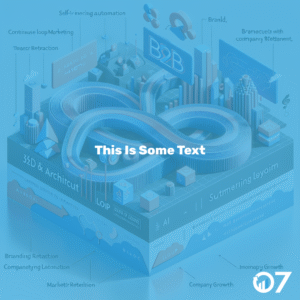In the world of websites, adhering to established web design guidelines is paramount for creating user-friendly and effective websites. Here, we explore essential principles that underpin successful web design.
Creating a successful website involves adhering to essential principles that ensure simplicity, visual hierarchy, navigability, consistency, responsivity, accessibility, conventionality, credibility, and user-centricity. In this comprehensive guide, we delve into each principle, offering valuable insights to enhance your web design guidelines.
1. Simplicity
Focus on a minimalist approach to web design, ensuring that unnecessary elements do not clutter the user experience. Use a maximum of five colours, legible typefaces, and relevant graphics. A great example of simplicity is found on the homepage of HERoines Inc.
2. Visual Hierarchy
Arrange and organise website elements to guide visitors naturally towards essential components. Adjust the position, colour, or size of elements to create a visual hierarchy. Spotify’s homepage effectively demonstrates this principle.
3. Navigability
Plan intuitive navigation to help visitors easily find information. Keep the primary navigation simple, include navigation in the footer, use breadcrumbs, incorporate a search bar, and limit navigation options per page. HubSpot’s site map illustrates effective navigation.
4. Consistency
Maintain a consistent look and feel across all pages of your web design. Consistency in backgrounds, colour schemes, typefaces, and writing tone enhances usability. Airbnb’s ‘Help’ pages showcase the power of consistency.
5. Responsivity
Recognise the prevalence of mobile users and invest in responsive web design. Ensure your website adapts seamlessly to different devices, providing a great user experience. Statista reports 48% of global page views are from mobile devices.
6. Accessibility
Prioritise web accessibility by adhering to Web Content Accessibility Guidelines (WCAG). Make your site perceivable, operable, understandable, and robust. Ensure everyone, including those with disabilities, can use your web design effectively.
7. Conventionality
Balance originality with established web conventions to meet user expectations. Follow conventions like top navigation, clickable logos, and consistent layouts. This ensures familiarity and comfort for users.
8. Credibility
Build credibility by being clear and honest about your products or services. Include a pricing page to enhance transparency. Clearly communicating your value, as exemplified by Box.com’s pricing page, establishes trust.
9. User-Centricity
Design with the end-users in mind. Conduct user testing, gather feedback, and make improvements based on real user experiences. Utilise tools like Website Grader, Crazy Egg, and Loop11 for comprehensive testing.
Incorporating these web design guidelines into your web design process will contribute to a user-friendly, visually appealing, and credible web design. For more insights and tailored suggestions, explore our blog or contact us at info@07hm.co.uk or 01702 410663. Elevate your web design to create a positive and impactful online presence.






